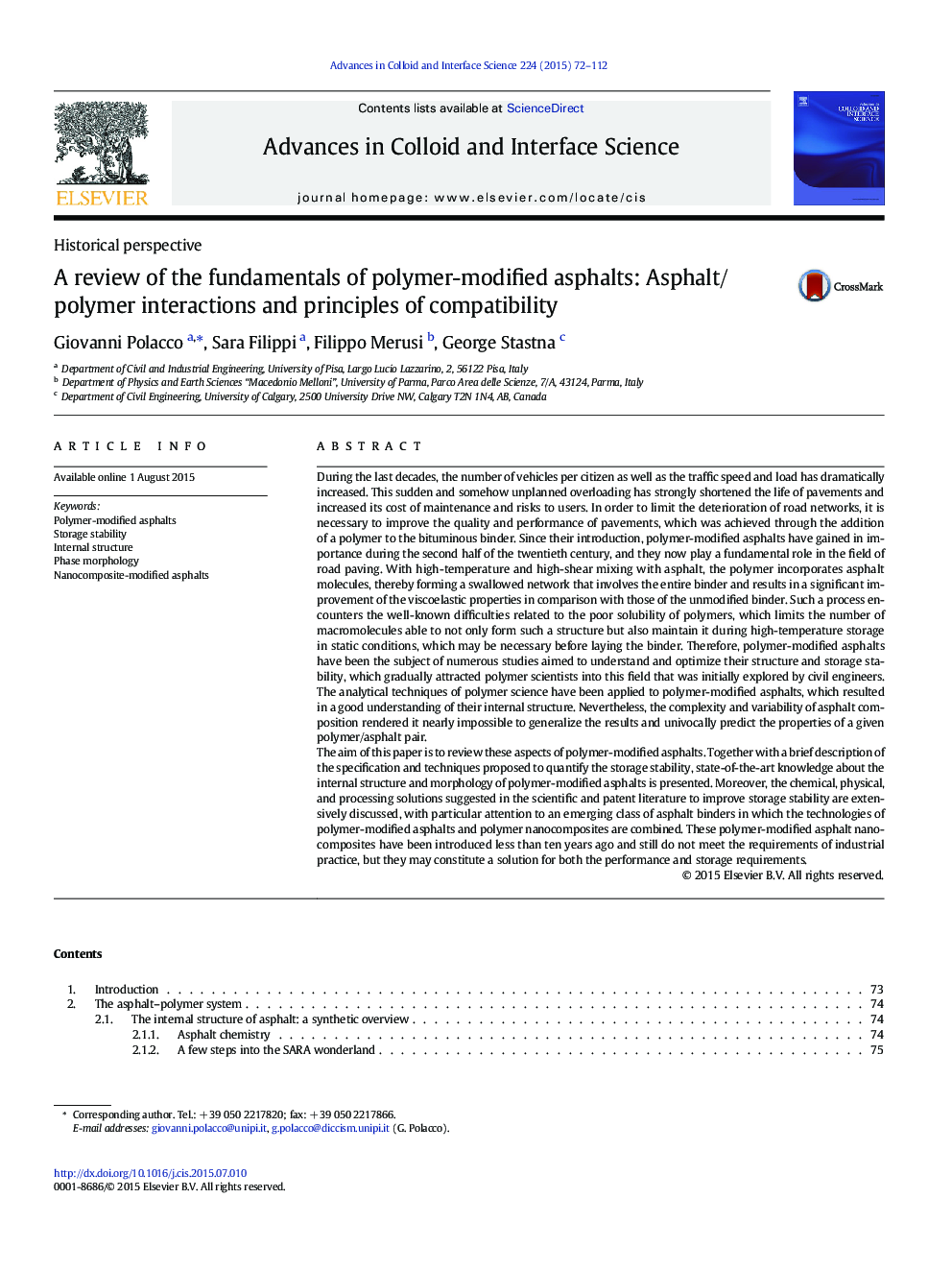| کد مقاله | کد نشریه | سال انتشار | مقاله انگلیسی | نسخه تمام متن |
|---|---|---|---|---|
| 590626 | 1453539 | 2015 | 41 صفحه PDF | دانلود رایگان |
• Modification with polymers strongly improves the performances of asphalt binders.
• PMAs are biphasic and often unstable during hot storage under static conditions.
• There is a correlation between interface characteristics and storage stability.
• The polymer/asphalt interface structure and compatibilization strategies are reviewed.
• An emerging solution is the joining of PMA and polymer nanocomposites technologies.
During the last decades, the number of vehicles per citizen as well as the traffic speed and load has dramatically increased. This sudden and somehow unplanned overloading has strongly shortened the life of pavements and increased its cost of maintenance and risks to users. In order to limit the deterioration of road networks, it is necessary to improve the quality and performance of pavements, which was achieved through the addition of a polymer to the bituminous binder. Since their introduction, polymer-modified asphalts have gained in importance during the second half of the twentieth century, and they now play a fundamental role in the field of road paving. With high-temperature and high-shear mixing with asphalt, the polymer incorporates asphalt molecules, thereby forming a swallowed network that involves the entire binder and results in a significant improvement of the viscoelastic properties in comparison with those of the unmodified binder. Such a process encounters the well-known difficulties related to the poor solubility of polymers, which limits the number of macromolecules able to not only form such a structure but also maintain it during high-temperature storage in static conditions, which may be necessary before laying the binder. Therefore, polymer-modified asphalts have been the subject of numerous studies aimed to understand and optimize their structure and storage stability, which gradually attracted polymer scientists into this field that was initially explored by civil engineers. The analytical techniques of polymer science have been applied to polymer-modified asphalts, which resulted in a good understanding of their internal structure. Nevertheless, the complexity and variability of asphalt composition rendered it nearly impossible to generalize the results and univocally predict the properties of a given polymer/asphalt pair.The aim of this paper is to review these aspects of polymer-modified asphalts. Together with a brief description of the specification and techniques proposed to quantify the storage stability, state-of-the-art knowledge about the internal structure and morphology of polymer-modified asphalts is presented. Moreover, the chemical, physical, and processing solutions suggested in the scientific and patent literature to improve storage stability are extensively discussed, with particular attention to an emerging class of asphalt binders in which the technologies of polymer-modified asphalts and polymer nanocomposites are combined. These polymer-modified asphalt nanocomposites have been introduced less than ten years ago and still do not meet the requirements of industrial practice, but they may constitute a solution for both the performance and storage requirements.
Figure optionsDownload as PowerPoint slide
Journal: Advances in Colloid and Interface Science - Volume 224, October 2015, Pages 72–112
